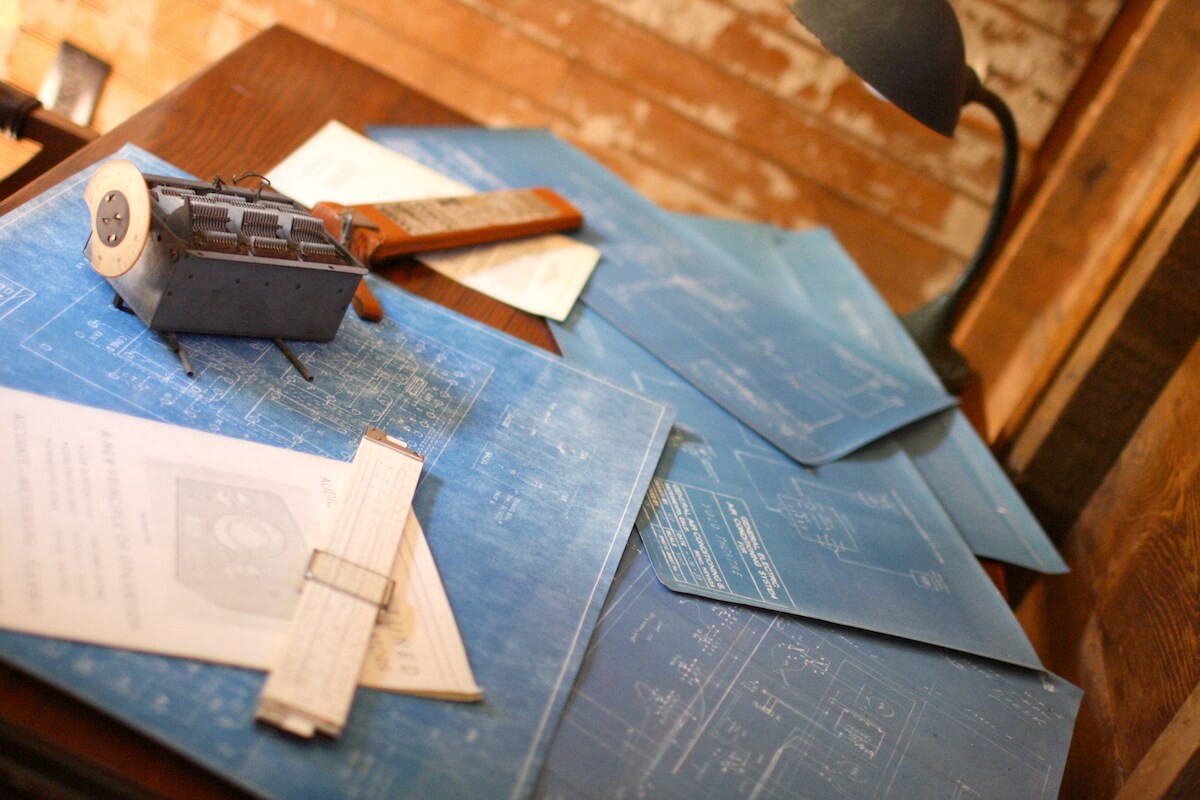This event preceded the similar and widely publicized success stories of Microsoft and Apple by more than 30 years. But it nonetheless perfectly defines the startup culture as we know it today. How come?

HP Garage Tour | Brian Solis | Flickr | CC BY
The American Dream
American history is often presented as an exodus myth, a story of taking risks to start anew in the Promised Land. That was the hope of the pilgrims crossing the Atlantic to escape religious persecution, and, later, the settlers of the West. These pioneers gave us the American Dream — the belief that in America anyone worth anything can dream big and bear the fruits of their labour.
In the early 20th century this mindset was alive and well. Immigrants were pouring into the country, looking to make the best of their life. The standard of living was rising, despite the economic setbacks suffered on the way. Such prosperity gave Americans one of the symbols of the middle class, a badge of honour for the hard-working masses — the suburban house.
The construction projects of the 1930s weren’t as big as their postwar counterparts, but the image of modern Suburbia was there — if you worked hard, you could afford to have your own house with your own lawn. One of the things that made such low density housing possible was the car. So next to these reasonably priced houses there stood a separate building, the garage.

Your Best Digs | Flickr | CC BY
The garage is one of the symbols of the American dream. It’s the physical manifestation of excess. It’s a sign of having more money than you need, meaning that you can afford a car. It’s a symbol of having time on your hands, enough to spend it on things other than work. So it didn’t take long before garages, first used for car maintenance, became full-fledged hobby spaces.
To this day people use them to spend their free time — make art, play music, assemble DIY projects and start businesses. It’s only natural that, like a true grassroots movement, the tech startup culture was born in a garage.
Created by Nerds and Tinkerers
In the first half of the century, electricity was still primarily seen as a natural force. The boundaries of innovation were pushed by the radio, another natural phenomenon we learned to make use of.
By extension, most inventions of the period — improvements in long-haul (planes, ocean liners) and short-haul (cars) travel, the birth of photo and video, the electrification of cities — were seen as triumphs of man over nature.
Starting in the 19th century, science magazines featured instructions for DIY tech projects. The first magazine completely dedicated to electronics and radio — the Modern Electrics — was a resounding success and had a circulation of 52,000 in 1911. A tech publishing boom followed soon after.

1912 Ad Modern Electrics Magazine (PeriodPaper)
Magazines such as The Electrical Experimenter featured scientific articles along with short sci-fi stories, and facilitated collaboration between amateur tech enthusiasts via their extensive classified sections.
That was the magic formula. The articles were sources of scientific information that could be practically applied, the works of fiction excited people’s imagination by depicting its possible applications, and the classifieds provided opportunities for collaboration and monetisation of people’s inventions. Growing up, David Packard was fascinated with the world of amateur radio. He made DIY projects and read the sci-fi stories.
Undercutting the Establishment
The relationship between tech and power is very apparent, and was even more so 100 years ago. People lived in the world of shrinking distances and superhuman capabilities. The innovators that made i enjoyed a superstar status, much like the tech giants of today.
As the valves and other electric components got cheaper, and information became more accessible, regular people finally got an opportunity to participate in the innovation game without significant upfront investments. All you needed for success was a prototype.

HP Garage Tour | Brian Solis | Flickr | CC BY
The patent system insured that the inventors didn’t even have to manufacture anything to turn a profit — they could just monetise their intellectual property.
Many of the major inventions of the era sparked so-called ‘patent wars,’ with parties battling for the right to call the invention their own. The aforementioned magazines’ classified pages had plenty of buying offers for the patents and inventions, as well as dubious offers of assistance for ‘beginner inventors,’ that sound very much like today’s incubators.
The fact that anyone could just create an innovative electronic product in their garage, without needing a huge manufacturing capacity, gave entrepreneurs a great way to undercut the establishment. Companies recovering from the Great Depression provided a window of opportunity for market disruption. HP utilised their low upfront costs, low overhead costs and innovative patented design to sell at a price point 4–6 times lower than their competitors. Their first large order — from Disney — jumpstarted their career.
This new culture took root, but couldn’t yet blossom. The interwar peace proved too short to create a lasting impact on the industry. During the Second World War, it was in fact playing second flute to the military complex.
Later the invention of transistors will change the technology landscape and accelerate the industry like nothing before it, but the spirit of tech entrepreneurship will remain same as it was back in that suburban garage. Nerdy and bold.
Related reading:
The History of SXSW: How It All Started
Techstars Startup Digest: From Launch to Today
Meet A Content Strategist: An Interview with Techstars Curator & SXSW Advisor
The Game of Archetypes: How Storytelling Works for Tech Brands
How Brands Can Break Through the Tech Media Bubble
Комментариев нет:
Отправить комментарий